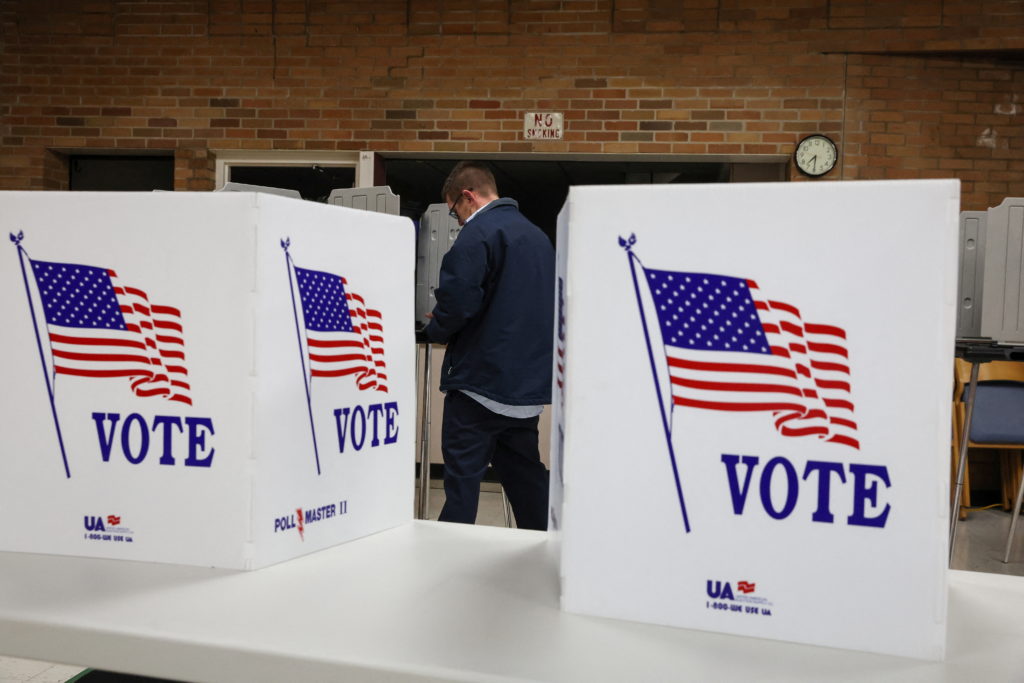As the nation prepares for the 2024 presidential election, events such as the Iowa caucus and New Hampshire Primary have been commonplace in the news. These two events, primaries and caucuses, can be somewhat confusing, even though they are fundamental democratic processes.With just five main candidates remaining, Trump, Haley, Biden, Phillips and Kennedy, the primary process will play a major role in the narrowing of the electoral field.
In simple terms, a primary is an election held within a party to determine who will be nominated for the general election. Some states do not hold primaries at all, opting instead to hold a caucus. This is an event where party members physically assemble in a public place and support their preferred candidate. While the caucus may seem outdated, it can provide some advantages.
To learn more about the differences between primaries and caucuses, TCN reached out to Dr. Elizabeth Stiles of the political science department. She stated “primaries are more representative of a population and have much higher turnout than caucuses” and that “the Iowa caucus takes place in the worst time of winter which limits participation even more.” However, according to Stiles, “caucuses are more deliberative, encourage candidate-voter interaction, and shared political discussions.”
You may ask yourself why two relatively small, homogenous states holding less than two percent of our nation’s population play such a huge role in the process of each party’s nomination. The answer quite frankly is because these two states have both passed laws determining that their states will hold their respective events before the others, and the national parties have gone along with it. Today, because of these laws, these states hold their primaries first, unless the parties decide to change it.
Currently, the polls show there will be a rematch of the 2020 general election between former President Donald Trump and current President Joe Biden. However, in 2024, the Democratic Party abandoned the Iowa caucus and opted for the state vote as a primary likely because “Joe Biden, as a sitting president seeking re-election, has more support by a large margin than his Democratic challenger Dean Phillips, among other reasons” said Stiles.
In another shake-up, prior to the primary taking place, Biden and other Democratic leaders were in an altercation with New Hampshire Democrats over which state would be first in the primary process.
New Hampshire has served as the first primary voting location for Democrats since 1920, but last year the Democratic National Committee decided that South Carolina would hold the first primary in 2024. As a result of this dispute between Biden, the DNC and New Hampshire, his name did not appear on the state’s primary ballot. However, three of Biden’s cabinet members began a write-in campaign throughout the state. While write-in campaigns are usually severely difficult to organize, President Biden won decisively, winning over 60% of the state’s vote while his next closest competitor, Congressman Dean Philips, won about 20% according to The New York Times.
While voters vote for their preferred candidate in a primary, it is actually the delegates of that particular party who choose their party’s nominee. Both political parties use a delegate system to determine their respective party’s candidate.
The Republican Party in 2024 has a total of 2,429 delegates according to BallotPedia. 2,325 of those are pledged or elected during primaries, caucuses or conventions to represent the voters, the other 104 are unpledged delegates and can choose the candidate of their choice at the convention. To secure the Republican nomination, a candidate will need a total of 1,215 delegates.
To allocate Republican delegates, there are several methods used. The first of these methods is the proportional method where states divide their delegates proportionally based on each candidate’s percentage of the vote. The second method is the winner-take-all all method where a candidate receives all delegates from a state if they win the primary. Currently, seven states use this method including Ohio. The final method is what is known as the hybrid method. In this method, states award some delegates to the overall winner and congressional district delegates based on the winner in each electoral district.
In 2024, the Democratic Party will have 4,532 delegates up for grabs in the primary according to BallotPedia, 744 of these are known as superdelegates. Superdelegates are members of the DNC, members of Congress, governors or distinguished party leaders. Superdelegates are free to support any candidate of their own choosing. The other remaining 3,788 delegates are pledged delegates. Pledged delegates, unlike superdelegates, “reflect the sentiments of those who elected them.”
To win the Democratic nomination, a candidate will need to receive support from a majority of the pledged delegates on the first ballot which is 1,895 this year. However, if the convention is contested, it will go to a second ballot where the super delegates will be allowed to select a candidate. If a second ballot is needed to secure the nomination, the candidate will need 2,258 delegates to be nominated. In the Democratic primary, each state allocates their delegates proportionally to candidates who received over 15 percent of the vote.
Stiles concluded her comments by stating , “John Carroll students can get easily involved in both the primary process and general election by educating themselves for 10 minutes a day with non-partisan information and aligning their values to a particular candidate. John Carroll students who are from another state and have lived in Ohio for 30 days can claim residency in the state and register to vote, or they can request an absentee ballot from their home state to vote in that election.”
So, even if events in Iowa or New Hampshire seem far off, in the next coming months, student votes will be as important as ever in deciding the next president of the United States.



Kelly • Feb 20, 2024 at 2:51 pm
Intelligent author/ great story! Interesting perspective for new and old voters.